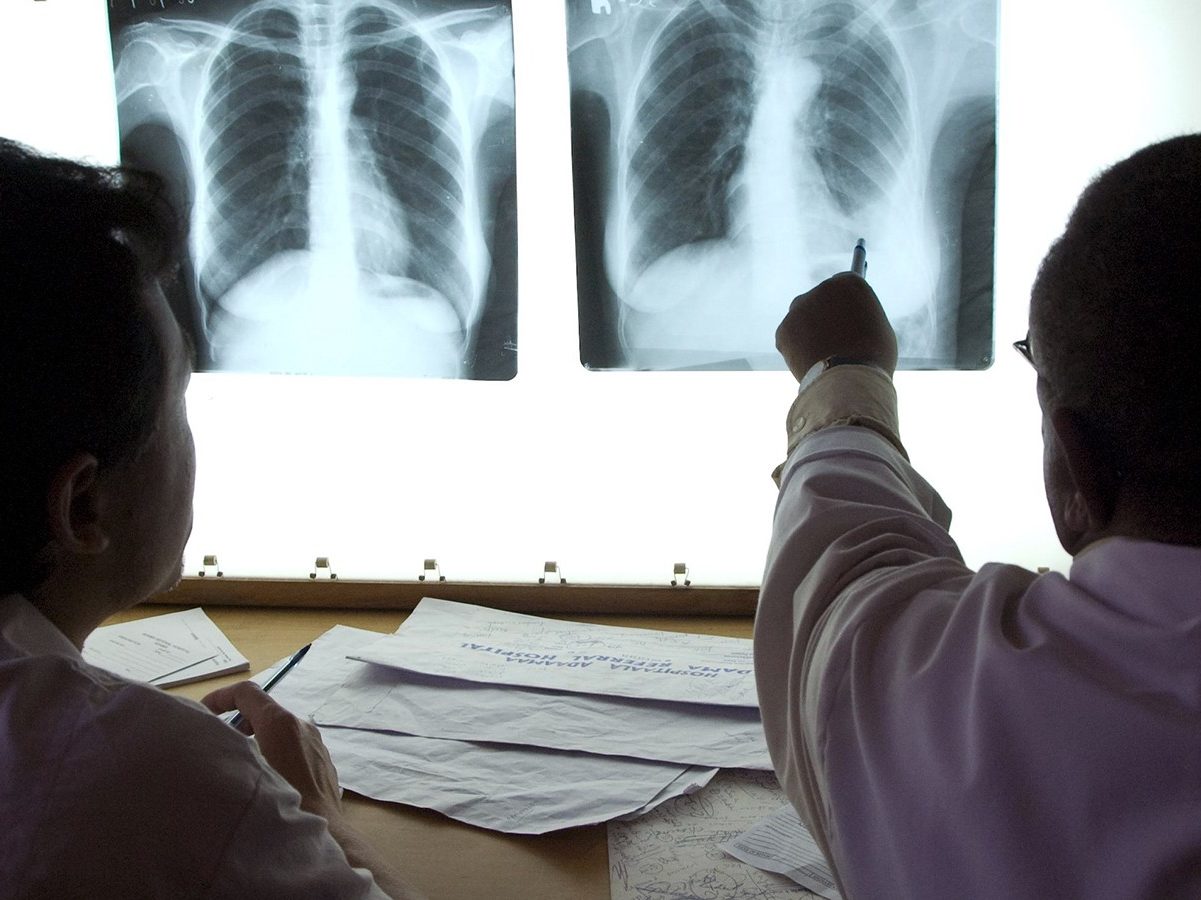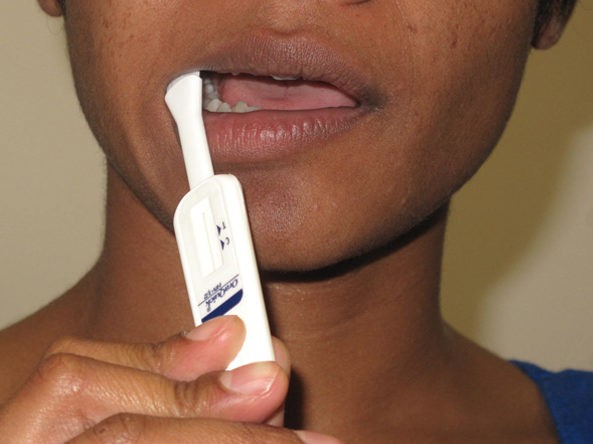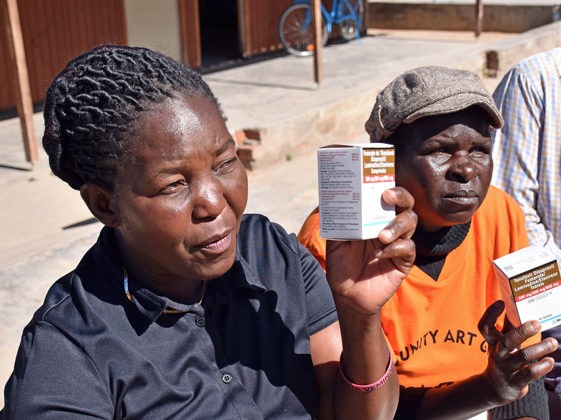Article and Study Summary:
Shorter Treatment for Nonsevere Tuberculosis in African and Indian Children
Published in:
New England Journal of Medicine 2022;386(10):911-922.
https://www.nejm.org/doi/full/10.1056/NEJMoa2104535
Authors:
Turkova A, Wills GH, Wobudeya E, et al.
Summary:
The open-label, randomized controlled, non-inferiority SHINE trial compared 4 months of anti-tuberculosis (TB) treatment with the standard 6 months of anti-TB treatment in children with non-severe TB disease in sub-Saharan Africa and India. Children (<16 years) with smear-negative, presumably drug-susceptible, non-severe TB were randomized (1:1) to receive 4 months or the standard 6 months of first-line anti-TB treatment, using pediatric dosing. The primary efficacy outcome was an unfavorable status after 72 weeks, defined as a composite of TB treatment failure, loss to follow-up during treatment, or death from any cause. There was no significant difference in the proportion of children with an unfavorable status in the 4-month group, compared to the 6-month group, meeting criteria for non-inferiority. Adverse events were similar between the groups. These results suggest that treatment for presumptive drug-susceptible TB could be shortened in children with non-severe TB disease.
Discussion Questions:
- How could the findings in this study impact policy where you work?
- What would it take to implement the shorter regimen from this study in the programs you work with? Do you have any experiences to share?
Please share your thoughts and experiences with us in the comments section below.
Full Synopsis:
PDF version available in English.
Study Summary
The SHINE trial was an open-label, randomized controlled, non-inferiority trial that compared the efficacy and safety of four months of anti-tuberculosis (TB) treatment with the standard six months of anti-TB treatment in children with non-severe, smear-negative, presumably drug- susceptible TB.
Study Setting
- Trial sites in India, Uganda, South Africa, and Zambia.
Methods
- Children (<16 years of age) with symptomatic, non-severe TB that was smear-negative on a respiratory sample, and who were due to start first-line anti-TB treatment were eligible to participate.
-
- Non-severe TB included respiratory TB confined to one lobe with no cavities, no signs of miliary TB, no complex pleural effusion, and no clinically significant airway obstruction or peripheral lymph node TB.
-
- Children with confirmed drug resistance or with known exposure to an adult with drug-resistant TB were excluded from the trial.
- Screening procedures included:
-
- An evaluation of TB symptoms and identification of any known TB contacts.
- A tuberculin skin test or interferon γ–release assay, where available.
- Radiography of the chest.
- At least two respiratory samples (gastric aspirate, expectorated sputum, or induced sputum) for smear microscopy, Xpert MTB/RIF assay (Xpert, Cepheid), mycobacterial culture (solid or liquid), and drug susceptibility testing.
- Fine-needle aspirate in those with peripheral lymph node TB.
-
- Eligible children were randomly assigned (1:1) to receive 4 months or 6 months of anti-TB treatment, using minimization (with a random element) according to trial center, age (<3 years or ≥3 years), HIV status, and ethambutol use.
- All the participants initially received 8 weeks of standard therapy with isoniazid, rifampin, and pyrazinamide (fixed-dose combination formulation), with or without ethambutol according to local guidelines (intensive phase). This was followed by standard therapy with isoniazid and rifampin (continuation phase) in a fixed-dose combination for either 8 weeks in the 4-month group (intervention) or 16 weeks in the 6-month group (control).
- All anti-TB treatment was administered 7 days/week, based on World Health Organization weight bands for TB treatment, and using child-friendly formulations. Directly observed treatment by health care workers was not done.
- Children were seen at screening, at enrollment, and at weeks 2, 4, 8, 12, 16, 20, 24, 28, 36, 48, 60, and 72.
- Blood samples for biochemical and hematologic testing (in all children) and for HIV viral load and CD4 count (in children with HIV infection) were obtained at screening and follow-up visits. Repeat respiratory samples were obtained if previous specimens were positive on microbiologic testing, if such an assessment was clinically indicated to assess recurrence or treatment failure, or if a new contact with drug-resistant TB was identified.
- TB status at enrollment (confirmed, unconfirmed, or unlikely) was adjudicated by an independent clinical expert committee on the basis of all available clinical, radiologic, and laboratory data.
- Adherence was assessed through pill counts at each visit and by adherence questionnaires at the end of the intensive phase and at the end of treatment.
- The primary efficacy outcome was unfavorable status by 72 weeks, defined as a composite of:
-
- TB events: treatment failure, including treatment extension beyond the replacement of missed doses; anti-TB treatment drug change or restart due to suspected treatment failure; and TB recurrence;
- Loss to follow-up during treatment; or
- Death from any cause.
-
- The primary safety outcome was an adverse event of grade 3 or higher during treatment and up to 30 days after treatment.
- The key secondary efficacy outcome was unfavorable status at 72 weeks in participants who were adjudicated by the endpoint review committee as having TB at baseline. Other secondary outcomes included death and adverse drug reactions.
- The noninferiority margin for the primary efficacy outcome was set at 6% and analyses adjusted for trial center, participant age (<3 years or ≥3 years), HIV status, and ethambutol use.
- A modified intention-to-treat population was used to evaluate the primary outcome, which included all randomized children except those who did not complete 4 months of treatment (when the treatment in the two groups was the same); had a late exclusion on the basis of data collected before randomization; or were clinically well after completion of treatment but were subsequently lost to follow-up.
Study Population and Follow-up
- Between July 2016 and July 2018, 1,461 children were screened and 1,204 underwent randomization, with 602 assigned to the 4-month group and 602 to the 6-month group.
- In total, 376 participants were in Uganda, 364 in Zambia, 315 in South Africa, and 149 in India.
- A total of 59 children (30 in the 4-month group and 29 in the 6-month group) were excluded from the modified intention-to-treat analysis.
- The demographic and clinical characteristics of the participants were similar in the two groups. Overall the median age was 3.5 years (range, 2 months to 15 years), 52% were male, 88% were African, and 11% had HIV infection.
- Overall, 67% of the participants had respiratory TB, 3% had peripheral lymph-node TB and 29% had mixed TB (respiratory and peripheral lymph-node disease).
- 14% of participants had bacteriologically confirmed TB on the basis of culture or Xpert testing. Xpert semi-quantitative results showed that all positive Xpert values were low or very low.
- Attendance at the final trial visit at week 72 was 95% among those expected to attend and was similar in the two groups.
- Adherence was similar in the two groups, with 94% of the children taking at least 80% of daily doses within 120% of the assigned days.
Primary Efficacy Outcome
- In the primary analysis, an unfavorable status was observed in 16 participants (3%) in the 4-month group, compared to 18 participants (3%) in the 6-month group (adjusted difference, −0.4%; 95% confidence interval [CI], −2.2 to 1.5).
- Results in the intention-to-treat and per-protocol populations were similar to those in the primary analysis.
- The most common reasons for an unfavorable status after month 4 were death from any cause (7 participants in the 4-month group, 12 in the 6-month group) and treatment failure (9 and 5 participants, respectively).
Secondary Efficacy and Safety Outcomes
- The key secondary analysis included 958 participants who had been independently adjudicated to have TB at baseline (80% of the enrolled population); 910 of these participants were included in the modified intention-to-treat population.
- Of these 910 participants, 2% in the 4-month group had an unfavorable status, compared to 3% in the 6-month group (adjusted absolute difference −0.6%; 95% CI, −2.6 to 1.4).
- Subgroup analyses by HIV status, region, sex, age, weight band, TB type, bacteriologic confirmation, and ethambutol given at baseline were all consistent with the primary result.
- A total of 115 adverse events of grade 3 or higher occurred during treatment or up to 30 days after treatment in 95 (8%) participants (49 events in 47 participants in the 4-month group and 66 events in 48 participants in the 6-month group).
- The most common adverse events were pneumonia or other chest infection (25%) or liver-related events (10%), with similar incidences in the two groups.
- A total of 192 serious adverse events occurred in 150 participants (12%) in the trial, including 31 deaths (12 in the 4-month group and 19 in the 6-month group). Twenty deaths (7 in the 4-month group and 13 in the 6-month group) occurred after month 4, and 13 deaths (5 in the 4-month group and 8 in the 6-month group) were considered by the end-point review committee to be related to TB.
- A total of 15 adverse drug reactions of grades 3 or 4 were considered to be related to trial drugs, including 11 hepatic events. All the adverse reactions except 2 occurred during the first 8 weeks of therapy and 2 participants permanently discontinued therapy after treatment interruption for an adverse reaction.
Critical Analysis
The open-label, randomized controlled, non-inferiority SHINE trial found 4 months of anti-TB treatment to be non-inferior to the standard 6 months of treatment in children with non-severe TB disease. The occurrence of adverse events did not differ significantly between the groups, and the majority of adverse drug reactions occurred during the intensive phase when the two groups had the same treatment regimen.
The following points should be considered when interpreting the study findings:
- The open-label design of the trial had the potential to result in more treatment extensions in the 4-month group, contributing to more unfavorable outcomes in this group. However, treatment extension only occurred in 2 participants in the 4-month group, and did not impact the overall findings. The end-point review committee that assessed TB outcomes were also unaware of the group assignments.
- The trial used a pragmatic approach to identifying non-severe disease, by following routine screening procedures and reviewing chest radiographs to assess the severity of respiratory TB. However, results may not be generalizable in settings where chest radiographs are not available to characterize non-severe TB.
- To ensure applicability of results, the trial was not limited to bacteriologically confirmed TB and the site clinicians assessed chest radiographs. These radiographs were also retrospectively reviewed centrally by two independent experts and a third expert was used if there were discordant interpretations. A third expert had to be used for 37% of the baseline chest radiographs, highlighting the variability of chest radiograph interpretations.
- The trial required smear microscopy to rule out more severe forms of respiratory TB. In many settings, rapid molecular diagnostic tests have replaced smear microscopy, which would make implementation on the basis of this trial challenging. Most Xpert results in this trial were negative, and the few positive samples had low or very low semi-quantitative results. This suggests that the trial findings could be extrapolated to children with negative, low, or very low positive values on Xpert.
- There was no difference in the primary outcome by HIV status. However, only 11% of children enrolled in this trial were living with HIV, which limits the generalizability of these results in this population.
Implications
The open-label, randomized controlled, non-inferiority SHINE trial found that 4 months of anti-TB treatment was non-inferior to 6 months of therapy in children with drug-susceptible, non-severe, smear-negative TB. These results suggest that treatment for presumptive drug-susceptible TB could be shortened in children with non-severe TB, and the trial methods outline an approach for identifying such children. As most children with TB have non-severe disease, shortening their treatment would have cost-saving implications for programs and reduce the medication burden on children and caregivers.
This article synopsis was written by Dr. Cassia Wells. Share your thoughts on this article or suggest an article for Journal Club by emailing her at caw2208@columbia.edu.
Articles of Note:
- Final Analysis of Efficacy and Safety of Single-Dose Ad26.COV2.S
- Duration Of Effectiveness of Vaccines Against SARS-Cov-2 Infection And COVID-19 Disease: Results of A Systematic Review and Meta-Regression
- Safety and Efficacy of a Third Dose of BNT162b2 Covid-19 Vaccine
- Tuberculosis Screening Among HIV-Positive Inpatients: A Systematic Review and Individual Participant Data Meta-Analysis









